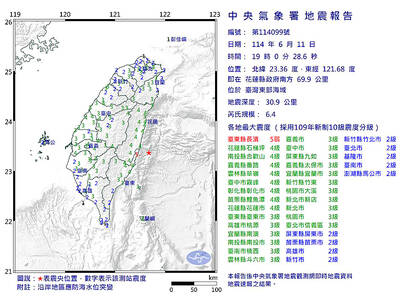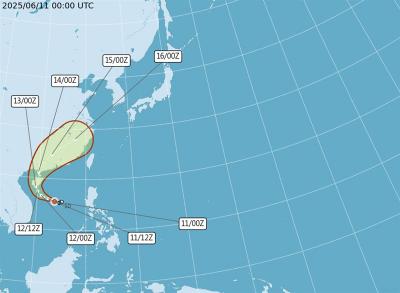The Chinese occupation of Tibet not only brought political repression, but also caused severe environmental problems that could threaten the lives of millions in Asia, Tibetan Women’s Association president Dolkar Lhamo Kirti told a forum organized by the Taiwan Friends of Tibet in Taipei on Friday night.
“It’s been almost 60 years since China took over Tibet and Chinese occupation has created many issues,” Dolkar said. “The environmental issues are the most serious.”
She said that more than 1 billion people in Pakistan, India, Bangladesh, Myanmar, Thailand, Laos, Cambodia and Vietnam, as well as about 85 percent of the population of China, depend on water from rivers that flow from the Tibetan Plateau.
However, China’s large-scale development projects, storage of nuclear waste, construction of reservoirs and projects to reroute rivers pose a serious threat to water resources there, she said.
“The Tibetan Plateau is sometimes called ‘the third pole’ by scientists, yet the plateau’s ice is melting twice as fast as the North and South poles,” Dolkar said, showing pictures of glaciers from decades ago and now.
“Besides global warming, massive industrial development projects have accelerated the melting of the ice,” Dolkar said. “Rapid melting has led to floods and drought.”
She showed current pictures of the Yellow and Yangtze rivers, and compared them to pictures from decades ago.
“You can see from the pictures that the flows are not as they were before,” she said.
The Chinese government has also been trying to alter the courses of rivers to gather as much water as possible in reservoirs supplying massive industrial or agricultural projects, she said.
“Even worse is that the factories could pollute the rivers that feed millions of people in Asia,” she said. “In recent years, Tibetan farmers have discovered buried nuclear waste barrels.”
“We’re not sure where this nuclear waste comes from,” she said.
Dolkar urged the world to pay more attention to environmental issues in Tibet, saying it was not just a Tibetan issue, but an issue for millions in Asia.
Dolkar also brought attention to the destruction of grasslands by the Chinese policy of settling Tibetan nomads.
“In the past thousands of years, Tibetan nomads have driven their cattle around the Tibetan grasslands. They may stay in one place for three months before moving on to the next spot,” Dolkar said.
“Since the nomads are moving around, the grass gets to recover,” she said.
However, in the name of protecting the grasslands, the Chinese government is asking the nomads to settle down.
Dolkar said this policy can only bring destruction of the grasslands, as the grass does not have a chance to recover and over-exploited grasslands lead to poor water and soil conservation, which can lead to disaster.
Another guest speaker, Ngawang Woeber, a former political prisoner in Tibet and president of the Gu-Chu-Sum Movement of Tibet, criticized the Chinese government over its handling of the massive earthquake in the Tibetan Autonomous Prefecture of Yushu in Qinghai Province.
The movement is an organization of former political prisoners dedicated to assisting Tibetan political prisoners and their families.
A native of Yushu in close contact with relatives and friends since escaping to India, Ngawang criticized the Chinese government for putting political concerns first in the aftermath of last month’s earthquake that killed thousands.
He said that about 10,000 Tibetan monks from Tibetan regions in Qinghai, Sichuan and Tibet rushed to Yushu to join the rescue efforts immediately after the quake.
“The Chinese government bragged to the media about its rescue effort, but the truth is that there were no rescue teams dispatched by the Chinese government in the first couple of days,” Ngawang said.
Worried that the situation could turn into another anti-government rally like the one in March 2008, the first thing that the Chinese military did when they arrived was to expel all the monks.
“Many people wanted to bring donations to the survivors, but the Chinese government said it would accept donations on their behalf — so far, the survivors have not received one yuan of the donations,” Ngawang said, citing his own sources.
He said that many survivors were asked to sit in front of tents and other supplies and say how much they appreciated the government and the Chinese Communist Party’s help in front of cameras.
“That was just a show, because thousands of survivors had no place to stay and no tents, while local officials had two or more tents,” Ngawang said.
A Taiwanese member of the audience who wished to remain anonymous showed the Taipei Times a text message sent after the earthquake from a Tibetan friend in Yushu.
The message said that while many people in their family had been injured, the local hospital asked for a 80,000 yuan (US$11,700) deposit for each person when they sought treatment.

A magnitude 6.4 earthquake struck off the coast of Hualien County in eastern Taiwan at 7pm yesterday, the Central Weather Administration (CWA) said. The epicenter of the temblor was at sea, about 69.9km south of Hualien County Hall, at a depth of 30.9km, it said. There were no immediate reports of damage resulting from the quake. The earthquake’s intensity, which gauges the actual effect of a temblor, was highest in Taitung County’s Changbin Township (長濱), where it measured 5 on Taiwan’s seven-tier intensity scale. The quake also measured an intensity of 4 in Hualien, Nantou, Chiayi, Yunlin, Changhua and Miaoli counties, as well as

Taiwan is to have nine extended holidays next year, led by a nine-day Lunar New Year break, the Cabinet announced yesterday. The nine-day Lunar New Year holiday next year matches the length of this year’s holiday, which featured six extended holidays. The increase in extended holidays is due to the Act on the Implementation of Commemorative and Festival Holidays (紀念日及節日實施條例), which was passed early last month with support from the opposition Chinese Nationalist Party (KMT) and Taiwan People’s Party. Under the new act, the day before Lunar New Year’s Eve is also a national holiday, and Labor Day would no longer be limited

The first tropical storm of the year in the western North Pacific, Wutip (蝴蝶), has formed over the South China Sea and is expected to move toward Hainan Island off southern China, the Central Weather Administration (CWA) said today. The agency said a tropical depression over waters near the Paracel and Zhongsha islands strengthened into a tropical storm this morning. The storm had maximum sustained winds near its center of 64.8kph, with peak gusts reaching 90kph, it said. Winds at Beaufort scale level 7 — ranging from 50kph to 61.5kph — extended up to 80km from the center, it added. Forecaster Kuan Hsin-ping

COMMITMENTS: The company had a relatively low renewable ratio at 56 percent and did not have any goal to achieve 100 percent renewable energy, the report said Pegatron Corp ranked the lowest among five major final assembly suppliers in progressing toward Apple Inc’s commitment to be 100 percent carbon neutral by 2030, a Greenpeace East Asia report said yesterday. While Apple has set the goal of using 100 percent renewable energy across its entire business, supply chain and product lifecycle by 2030, carbon emissions from electronics manufacturing are rising globally due to increased energy consumption, it said. Given that carbon emissions from its supply chain accounted for more than half of its total emissions last year, Greenpeace East Asia evaluated the green transition performance of Apple’s five largest final